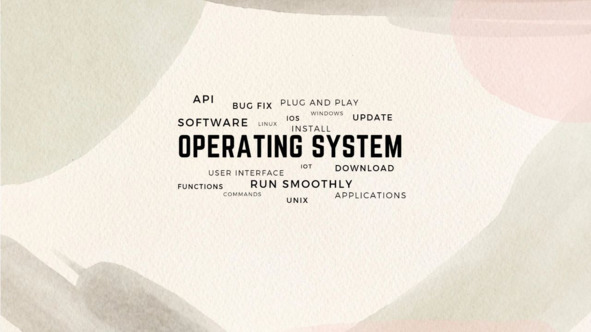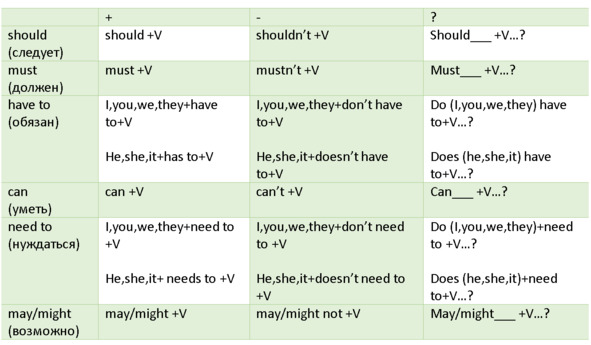
Полная версия:
English for system administrators
Helen: Hi, how are you?
Your line:___________
Helen: Well, I’m trying to decide which software I want to use for note-taking.
Your line:___________
Helen: I’ve been using Notepad recently, but sometimes it’s so irritating for me. Can you please recommend any other options?
Your line:___________
Helen: Do you think this one is harder to use?
Your line:___________
Helen: Can I also edit in it my text? For example, use different shrifts and colours?
Your line:___________
Helen: What about voice notes or drawing?
Your line:___________
Helen: And is it compatible with other OS? Or is it only for Windows?
Your line:___________
Helen: Thanks a lot! I think I’ll try that one and see how it goes.
Your line:___________
Now you know:
– how to talk about software in English;
– how to compare things with the use of adjectives;
– how to agree, disagree and express your doubts.
Vocabulary:

Unit 6. Operating systems
1. Look at the picture and discuss the questions:

– What is an operating system?
– Can you name any types of OS?
– How can you install OS?
– Why do you need to update OS?
2. Read the letter and answer the questions:
To: Sam Barewell
Subject: Installation of new version of Windows
Dear Sam,
I am writing to ask for your support with my computer’s operating system. I encountered some issues with my current OS yesterday. Can you please guide me and give instructions on how to download and install the latest version of Windows? Additionally, I would appreciate if you could advise me on how to fix any bugs that may arise during the installation process.
Thank you for your time and assistance in advance.
Sincerely,
Jakob Leen
– What is the purpose of Jakob’s letter?– Why does he want to upgrade OS?3. Divide the phrases for official emails:
a. I am writing to you to…b. Best regards,c. Thank you in advance.d. Dear…,e. Let me know if…f. I would appreciate if you could…g. Sincerely,
4. Read the reply from Jakob and complete the structure of the email:
a. greetingb. senderc. email bodyd. email endinge. recipientf. email sign-offg. subject1) To: Jakob Leen
2) Re: Installation of new version of Windows
3) Dear Jakob,
4) I am writing in reply to your email. If you want to install the latest version, you need to make sure that you have enough space on your hard drive. Please, pay attention that you must backup all your important files and documents before you begin. Other unimportant data you don’t have to back up.
Once you’ve done it, you can start the installation process. Firstly, insert the installation disk or USB drive into your computer and restart it. Your computer should boot from the installation media automatically. If it doesn’t boot, you will need to change the boot order in your BIOS settings.
Follow the on-screen instructions to complete the installation process. You’ll be prompted to enter your product key, select your language and time zone, and choose which version of Windows you want to install.
If there are any bugs with your applications after installing a new version, you can try running the built-in troubleshooter tool or updating your drivers. You may also check for updates to Windows itself by going to «Settings», then click on «Update & Security» and choose «Windows Update».
5) Let me know if you’re still experiencing problems.
6) Best regards,
7) Sam
5. Read the reply once again and complete the notes:
The email is about how to______. Before Jakob starts the installation process, he needs to ______. To start an installation process Jakob can ______. If there are any problems, Jakob can try ______.
6. Choose the meaning of the words in bold:
1) The command PROMPT allows users to execute different commands in Windows.
a. a symbol to perform the next command
b. a symbol to download software
2) I always TROUBLESHOOT new software before putting it in production.
a. to find and solve problems with a system or device
b. to cause problems
3) There’s a BUG in the code. You need to fix it immediately.
a. a programming tool
b. an error in a program
4) She notices a strange sound while BOOTing her laptop.
a. to turn on a computer by loading OS
b. to turn off a computer by loading OS
5) He had an access to the BIOS settings by pressing F2.
a. basic input operating system
b. basic input-output system
6) Please, INSERT your USB drive here.
a. to give something
b. to put something into
7. Answer the questions:
– Why do you need to troubleshooting new software?
– What bugs can occur while installing software?
8. Read the sentences from the email and complete the rules:
a. You NEED TO make sure that you have enough space on your hard drive.
b. You MUST backup all your important files and documents
c. You CAN start the installation process.
d. Your computer SHOULD boot from the installation media automatically.
e. You MAY also check for updates to Windows itself.
f. Other unimportant data you DON’T HAVE TO back up.
We use ___ to express advice.
There is one more verb for strong recommendations, rules or something that you decided to do – ___.
The verb ___ expresses necessity. After this verb we use to.
___ is used to talk about our abilities.
If we’re not sure in something, we use ___ or might. These verbs have almost the same meaning, but ___ is used for asking permissions and also it usually means «likely to happen». Might means «unlikely to happen».
If there is the lack of necessity, use _____. Pay attention that _____ in positive statements means that someone told you to do something.
9. Study the rules:
Modal verbs

Pay attention: in negative sentences and questions before «need to» and «have to» we use do or does.
10. Choose the correct functions of the verbs in bold:
a. Can you please help me? (ask for a permission/obligation)
b. I can speak Japanese. (possibility/ability)
c. He needs to talk to her right now. (advice/necessity)
d. They might be at the meeting. (possibility/obligation)
e. You shouldn’t be worried. (lack of necessity/advice)
f. I have to go to the office. My manager told me to come. (obligation/lack of necessity)
11. Cross out the incorrect modal verb:
1. When there is a problem, you must/shouldn’t troubleshoot it.
2. The computer must/may boot slowly if there are too many programs running.
3. You can’t/shouldn’t insert the USB drive until the computer has finished shutting down.
4. Do I need to/can do this task today?
5. This software can’t/mustn’t integrate with that operating system.
6. Before printing, you don’t need to/should generate a PDF file.
7. You mustn’t/may not maintain the equipment without proper training.
8. You may/need to configure the settings to your liking.
9. I need to/can backup my files before upgrades.
10. Must/May I ask a question?
11. She has to/must do her homework. Her teacher told her to do it.
12. Rewrite the sentences with modal verbs:
a. I know how to upgrade Ubuntu. (can)
b. Mary isn’t sure if he is at work or not. (might)
c. We are obliged to wear a uniform. (have to)
d. Max advises me to quit the job. (should)
e. It’s dangerous to block an emergency exit. (mustn’t)
f. It’s necessary for her to take some pills. (need to)
g. This ticket is a gift for you. It’s not necessary to pay for it. (not have to)
h. It’s possible that Markus is still there. (may)
13. Complete the sentences with your own ideas:
a. Today I must_____.
b. I need to______this week.
c. At my work we mustn’t_______.
d. I don’t have to_______ at work.
e. I can________ but I can’t_________.
f. If a worker has a problem, he should________.
g. I may______next month.
14. Read one more email from Jakob and write the reply using modal verbs. Mind the structure of official emails:
To: Sam Barewell
Subject: System configuration
Dear Sam,
I am contacting you for your professional assistance. During the last meeting with the IT department managers agreed to improve system performance of one of the servers. For that purpose, could you please identify which services are not used there and disable them? I would also appreciate if you could provide me some information about the date when it’ll be done and which steps you need to do.
Thank you in advance.
Yours sincerely,
Jakob Leen
Now you know:
– useful words to talk about software;
– how to use modal verbs;
– how to write official emails.
Vocabulary:

Unit 7. Hardware virtualization
1. Look at the news and answer the questions:

– What is hardware virtualization?
– How can it help companies?
– What are the possible risks of cloud hardware virtualization?
– Do you think that hardware virtualization is an ideal computing environment of the future? Why?
2. Read the text and tick the topics which were mentioned:
Hardware virtualization is a technology that allows the hardware elements to be divided into multiple virtual machines. Sometimes hardware virtualization is executed on a particular hardware platform by host software. It requires a hypervisor which is used in order to maintain the virtual environment by creating virtual versions of hardware. Most common examples of desktop virtualization products are the following: Vmware, VirtualBox, and Parallels.
Конец ознакомительного фрагмента.
Текст предоставлен ООО «ЛитРес».
Прочитайте эту книгу целиком, купив полную легальную версию на ЛитРес.
Безопасно оплатить книгу можно банковской картой Visa, MasterCard, Maestro, со счета мобильного телефона, с платежного терминала, в салоне МТС или Связной, через PayPal, WebMoney, Яндекс.Деньги, QIWI Кошелек, бонусными картами или другим удобным Вам способом.
Вы ознакомились с фрагментом книги.
Для бесплатного чтения открыта только часть текста.
Приобретайте полный текст книги у нашего партнера:
Полная версия книги
Всего 10 форматов



